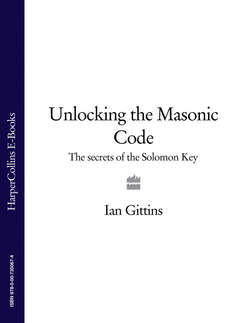Читать книгу Unlocking the Masonic Code: The Secrets of the Solomon Key - Ian Gittins - Страница 11
The Building of King Solomon’s Temple
ОглавлениеMount Moriah is one of the most controversial religious flashpoints on the face of the Earth. Three millennia on from King David’s day, the locale—now known as Temple Mount—is vigorously claimed by both Judaism and Islam, and remains one of the largest stumbling blocks to a negotiated settlement between Israel and Palestine. When then-Israeli opposition leader Ariel Sharon visited the site, in September 2000, the hostile Arab response to his visit led to the uprising that became known as the al-Aqsa Intifada.
The site is cherished because the holy books of both faiths describe miraculous events happening there. The Bible identifies Mount Moriah as the place where God commanded Abraham to sacrifice his only son, Isaac. The Koran, for its part, claims that Mohammed climbed a golden ladder of light from this sacred rock to heaven, where Allah instructed him in the forms of worship and devotion to be followed by all Muslims.
Biblical legend has it that David conquered the people of Jebus in 1000 BC and established Jerusalem as Israel’s capital city. The King intended to build a vast temple on Mount Moriah, but was forbidden to do so by God because of the copious bloody wars he had waged while on Israel’s throne. David had also sent a loyal courtier, Uriah, to certain death in battle so that he could seduce his wife, Bathsheba. In 981 BC, she bore him a son—Solomon.
David remained fixated on building a temple on the mount, and before his death he collected vast resources to allow Solomon to perform the task—the Bible claims it to have been 100,000 talents (approx 3,000 tons) of gold and one million talents (300,000 tons) of silver. After his father’s demise, Solomon commenced the construction process. As 1 Kings 5:5 has it:
Behold, I purpose to build a house unto the name of the Lord my God, as the Lord spake unto David my father, saying, Thy son, whom I will set upon thy throne in thy room, he shall build a house unto my name.
Feeling Israel did not have enough architects and skilled workers to take on the building of the temple, Solomon asked for help from Hiram I, the Phoenician King of Tyre. Hiram obliged, sending leading members of the ancient collective of builders known as the Dionysian Artificers of Tyre (see page 79) as well as thousands of labourers and thousands of tons of Lebanese timber. He also dispatched a man who was to become central to the narrative of the Freemasons—Hiram Abiff, Tyre’s most gifted architect and mathematician.
Described in I Kings 7:14 as ‘a widow’s son…a worker in brass…filled with wisdom and understanding’, Hiram Abiff oversaw the entire temple project, alongside King Solomon himself and Hiram, King of Tyre. Work on the temple began in the fourth year of King Solomon’s reign, 956 BC, and lasted for seven years. The largely Phoenician workforce built the edifice in the prevailing Phoenician or Egyptian style, which meant that a small outer vestibule, flanked by two ornate bronze pillars named Jachin and Boaz, led into a larger middle chamber. This transition room was known as Hekal, or Holy Place.
The centrepiece of the temple was the Sanctum Sanctorum, or Holiest of Holies, a windowless chamber that it is said was lined throughout with gold and Lebanese cedar. This central room was intended to house the Ark of the Covenant—the stone tablets passed by God to Moses on the Mount—a jar of manna and the Rod of Aaron—the staff carried by Moses’ brother, which supposedly grew buds and bore fruit when Moses carried it into the Tabernacle (see Numbers 17:8). Only rabbis and holy men could enter these inner chambers of Solomon’s Temple—non-ordained Jews worshipped outside the building.
It is believed that King Solomon’s Temple was finished around 949-948 BC. Despite its striking design and glitteringly ornate interior, it was actually fairly small: 90 foot long by 30 foot wide and 45 foot tall. However, as this feat of ancient engineering was nearing completion, Masons believe that the genius architect overseeing the process, Hiram Abiff, was brutally slain.
